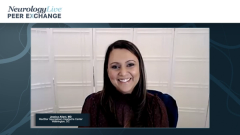
Acute and Preventive Treatment Options for Migraine
Sait Ashina, MD, reviews current AHS (American Headache Society) treatment recommendations for the acute and preventive treatment of migraine.
Episodes in this series

Jessica Ailani, MD: What are these migraine-specific acute treatments that we've been mentioning? Later we'll talk about preventive treatments. Sait, maybe you can take us through what the American Headache Society Consensus statement recommendations about acute treatments are.Let’s talk about what migraine-specific acute treatments are. This is some heavy lifting I'm going to have you do, but I know you can do it. Maybe you can talk us through triptans, ergots, gepants, ditans, NSAIDs [nonsteroidal anti-inflammatory drugs], neuromodulation. Just briefly, walk us through: when do we use what? How do we decide to go to something new? When do we pull out a neuromodulation device? Our audience would love to have some guidance here about what to do and when to do it.
Sait Ashina, MD: Yes, Jessica. I would like to start first with the indications for treatments. And Julio [Julio R. Vieira, MD] mentioned about the correct diagnosis. The correct diagnosis is important. And for that, we do use ICHD-3 [International Classification of Headache Disorders, 3rd edition] criteria, which are developed by the International Headache Society to diagnose the migraine. After the correct diagnosis comes the correct treatment. And to find the correct treatment, what American Headache Society, for example, recommends is to use evidence-based treatments. We know that these treatments are working; they have been shown and proven to be effective in patients with migraine, and this concerns both the acute and preventative therapies. These treatment plans which I'm going to talk about are very similar for both groups of patients whether they need acute or preventative treatments or both. In my opinion or in the opinion of all my colleagues it is important to use evidence-based guidelines. Now, if you have a patient with severe nausea, as it was mentioned before, or vomiting, the other routes of administration, for example, the non-oral or device treatments, for example, could be considered in these patients. And then we also think about the tolerability and safety issues. We look at the comorbidities where certain acute medications or preventative medications may be contraindicated or not recommended, for instance, or we have some concerns about their safety. Even though there are not a lot of data, for example, for preventative drugs, we do still have some concerns, and we’re still cautious when we prescribe. Then, what we also talk about for acute treatment is availability of a soft administrative rescue medication. If you take 1 medication, if it doesn't help, do we have something else I can use as a rescue? This is very important. And 1 of another important topics, which we also mention, is avoiding the medication use or overuse of acute headache medications because we know it leads to the progression of the migraine. It leads to the so-called medication overuse headache, and it can be associated with a lot of burdens and a lot of disability, as we know. Now, for acute treatments, we do have some old medications which we have been using a lot and so-called conventional treatment. This includes simple analgesics which are not specific migraine medications but they're still proven to be effective for treatment of migraine. Among those, we have simple medications like ibuprofen, acetaminophen, but we also have ketoprofen. You have some more specific nonsteroidal anti-inflammatory drugs. And then we have the triptans which, until the last year, have been the mainstay of treatments of migraine. They've been on market since the nineties, have shown to have a proven efficacy and some tolerability. We've been using them a lot in our patients. Now, there are old so-called migraine-specific drugs like ergotamine and dihydroergotamine. They've been used less because of the adverse effect profile. However, more recently there is a new the dihydroergotamine nasal spray available which offers the better delivery options and better efficacy, and possibly more tolerability. And then more lately, we had gepants added, so-called gepants. Now we have rimegepant [Nurtec] and ubrogepant [Ubrelvy] added to our medications to help our patients. And these are CGRP [calcitonin gene-related peptide] receptor blockers, which are the newer drugs we can also offer our patients. And lastly, we also have neuromodulation devices, which are electrical simulation devices. We can also use a so-called Nerivio, which is a bigger nerve simulator to treat acute headache attacks as well. Now, for prevention, we do have old medications which have been used for many years, and these are antiseizure medications topiramate and depakote. We have also antidepressants or tricyclic antidepressants nortriptyline and amitriptyline, which we can offer the patients. And then we do have better blockers—receptor blockers—and sometimes we use also tizanidine, although the evidence for them is less than with other medications. Now, the major disadvantage with the oral medications for prevention was the so-called low adherence or patients would stop treatments because of poor tolerability and safety issues with these medications. Now, this has been overcome with the introduction of CRP [C-reactive protein] monoclonal antibodies or CRP-targeted therapies as well as oral molecule CRP antagonists for prevention of migraine, which we have been offering our patients. We have also been offering device treatments for prevention of migraine, among them a Cefaly, which can also be used for acute treatment, as well as gammaCore. Now, the Botox is indicated for patients with chronic migraine—those who have 15 or more days with headaches per month over the past 3 months.
Jessica Ailani, MD: You did a great job covering all our different categories of treatments. I did want to just add 1 neuromodulation device that recently has been FDA cleared. It's such a long name. It's an electrical stimulation device that stimulates both the occipital nerve and the supraorbital nerve and it’s used for acute treatment of migraine. And just again, to make clear, Botox is onabotulinumtoxinA as its generic name. We do have an arsenal of treatment options. Now, how do we know which ones to use when? We look at whether the patient has episodes of migraine, or episodic migraine, or do they have chronic migraine? Sometimes that help helps with prevention for acute treatment. It doesn't really matter if you have episodic or chronic migraine.
Transcript Edited for Clarity
Newsletter
Keep your finger on the pulse of neurology—subscribe to NeurologyLive for expert interviews, new data, and breakthrough treatment updates.































